Lernen White Papers
Improving Output Performance of Switching Power Supplies Using the New DBx Module
Introduction
Switching power supplies have been the staple of the power conversion industry for over six decades, addressing some of the problems exhibited by older power processing technologies while also introducing new ones. As semiconductor switches continue to improve—such as with use of wide bandgap devices—power densities have increased along with higher efficiencies. An ideal power supply has zero output impedance, zero electromagnetic interference (EMI), zero output ripple, stepless control, zero drift with temperature, zero physical size, and zero cost. Linear power supplies produce a dc voltage with no high-frequency switching, have extremely low output ripple, and can produce stepless analog control. Linear power supplies control and dissipate power through series-pass power devices which closer mimics an ideal source, at the expense of significantly higher power loss. Nevertheless, linear power supplies are still in demand, especially where better output performance is needed.
Specialized applications require the high power and high efficiencies afforded by switching power supplies, along with the high performance of linear power supplies. Historically, higher power linear supplies have deployed a hybrid topology constructed with both a thyristor pre-regulator and a linear regulator. Thyristors, on the primary side of the main transformer, limit the voltage drop across the linear regulator on the secondary side. The cycle limited switching of thyristor pre-regulators heavily restricts the design’s transient response. The 50/60 Hz isolation transformer requires a much larger footprint compared to those in switching power supplies. This article proposes another hybrid technology which better bridges the gap between switching and linear power supplies to offer enhanced output performance at high power.
The Basic Concept
An obvious improvement to the thyristor pre-regulator is to use a switching power supply with its smaller magnetic components and better transient response times; these improvements come at the expense of increased EMI. With higher frequency switching, ripple at the input to the linear regulator can be minimized by lowering the voltage across the series-pass power device. Typical output voltage ripple for switching power supplies, 1000 Vdc output and below, is less than 0.5 Vrms. A linear regulator in the 1 volt range would have efficiencies on the same order as a standard switching power supply. Furthermore, EMI resulting from the switching power supply pre-regulator, would need to be effectively filtered.
Rather than offering a hyper-specialized product for these applications, Magna-Power chose to use its standardized switched-mode, programmable dc power supplies with a new add-on module to enhance the product’s performance specifications, approaching those of linear power supplies. The new product is called the DBx Module, shown in Figure 1, which includes an output linear regulator to minimize lower frequency output ripple, differential mode and common mode EMI filters, and an enhanced control scheme. This add-on module allows high-powered switching power supplies to behave more like high-powered linear power supplies. The DBx Module’s control scheme sets the output of the switching supply by approximately 1 Vdc above the desired output to enable the linear regulator to minimize lower frequency output ripple.
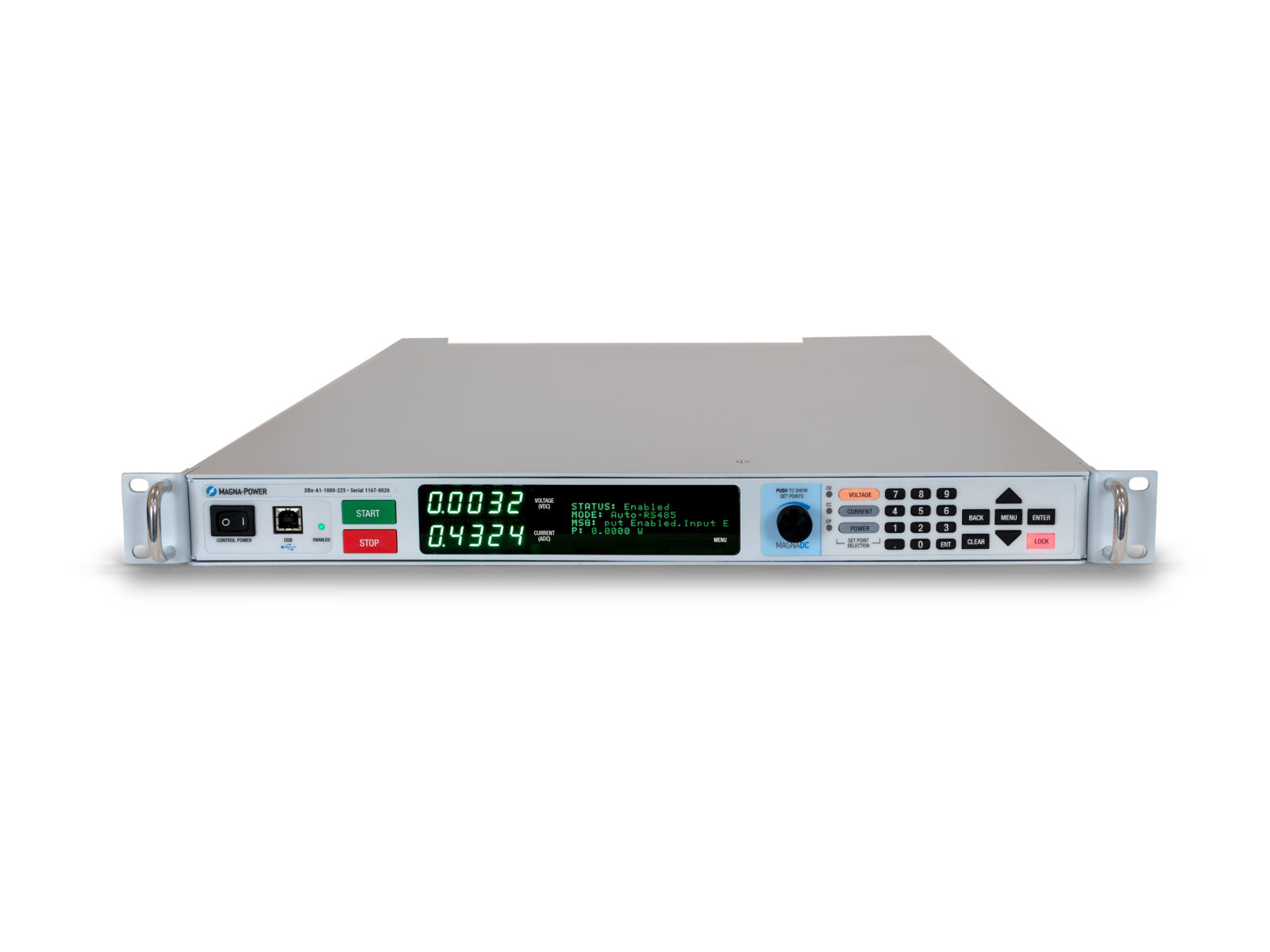
For closed loop control and—assuming a digital system—a high-resolution digital to analog and analog to digital converters are required. With 18-bit converters, 4 ppm set point accuracy is possible if the surrounding analog circuitry have similar accuracy. Accuracy is further enhanced with thermal stabilization which keeps the output voltage regulated to less than 25 ppm over a reasonable ambient temperature range.
The Output Filter
Switching power supplies are notorious for generating EMI. Differential line-to-line EMI is radiated by on-off switching of power devices and the flow of high-frequency harmonic currents through non-ideal output capacitor impedances. Common mode, line-to-ground EMI, is produced by currents flowing through the interface of output diodes and heatsink ground capacitance and transformer output winding capacitance to ground. While input line filters are not commonly used in power supply outputs, this type of filter can still be effective.
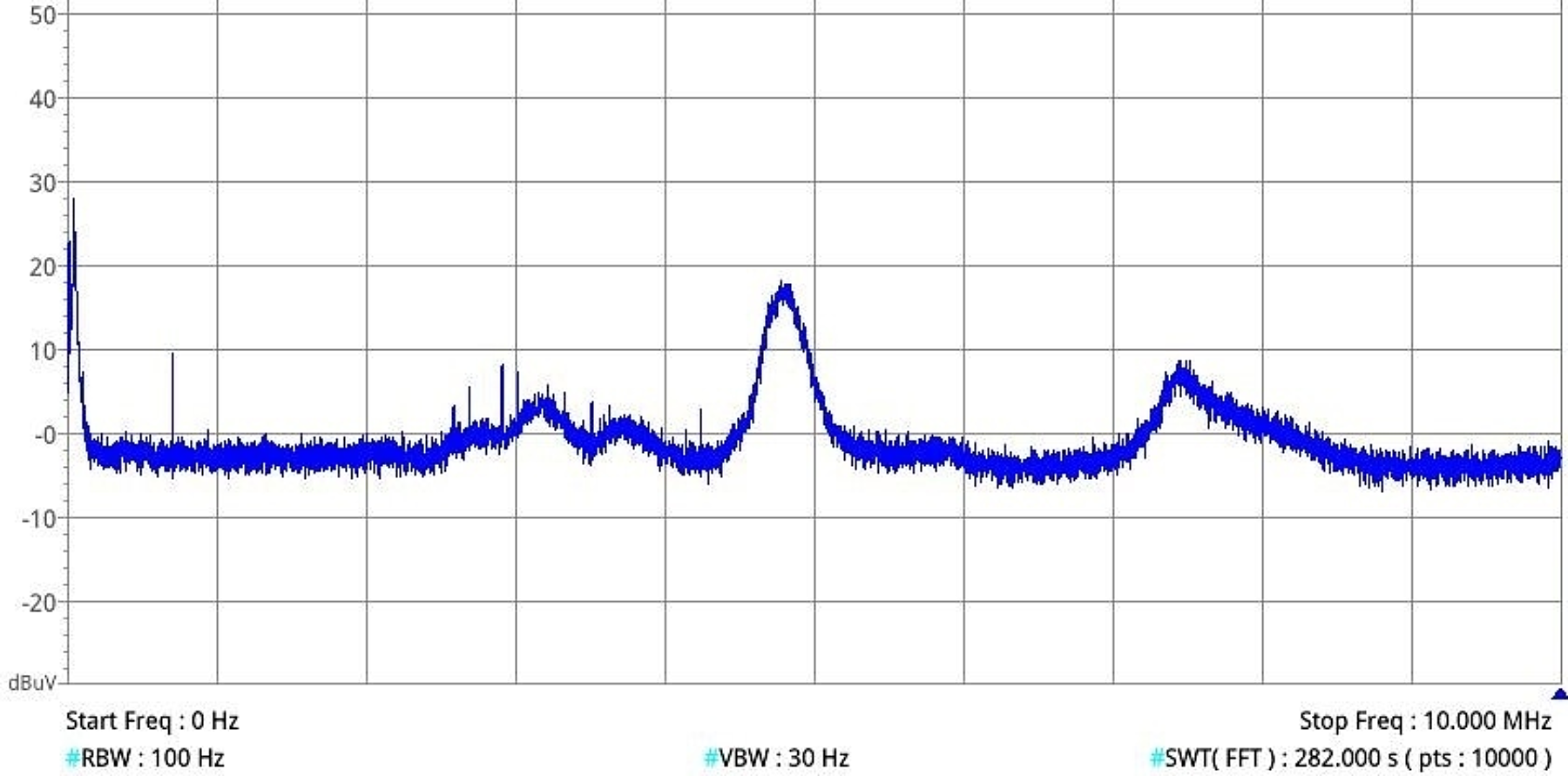
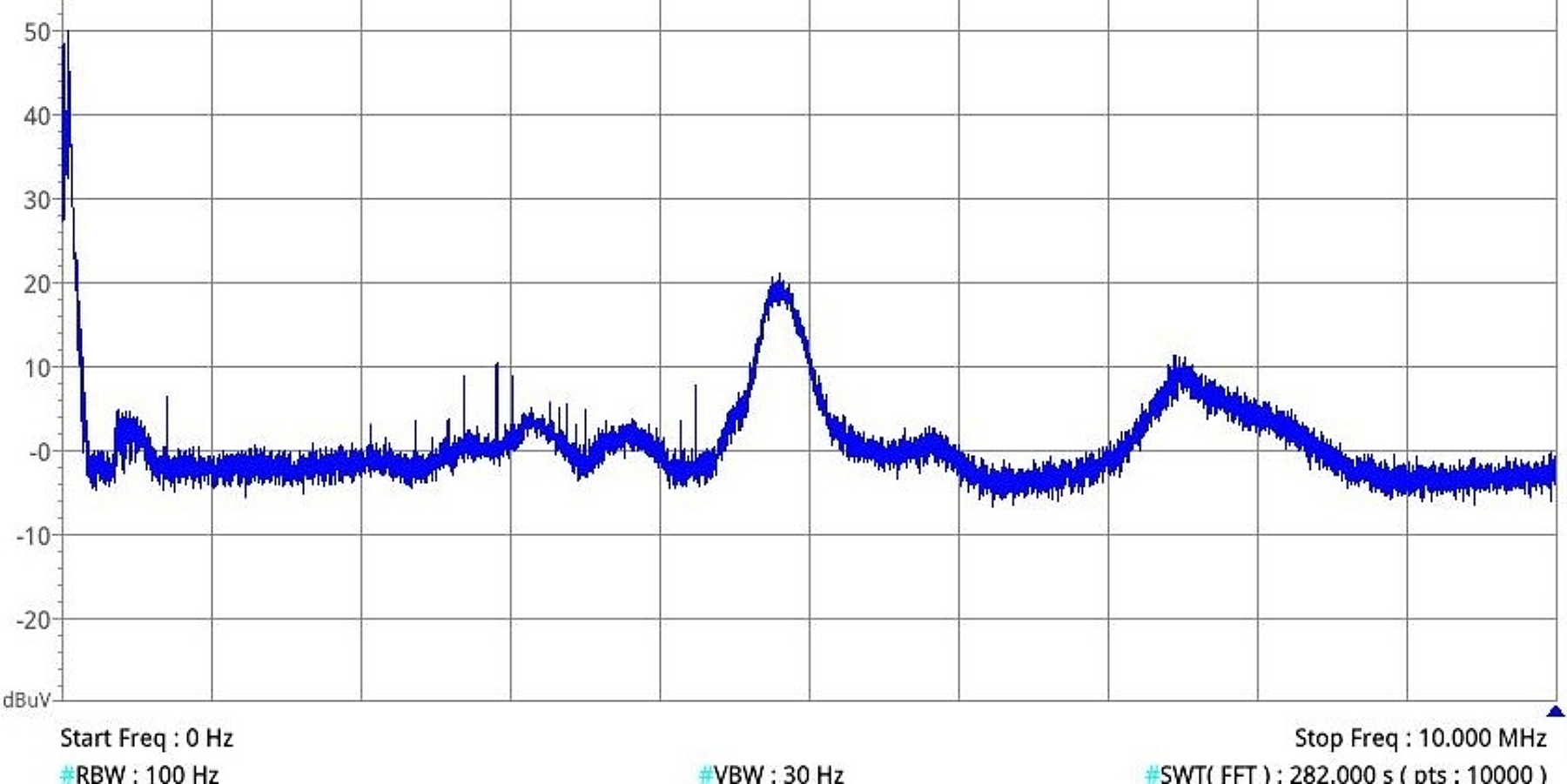
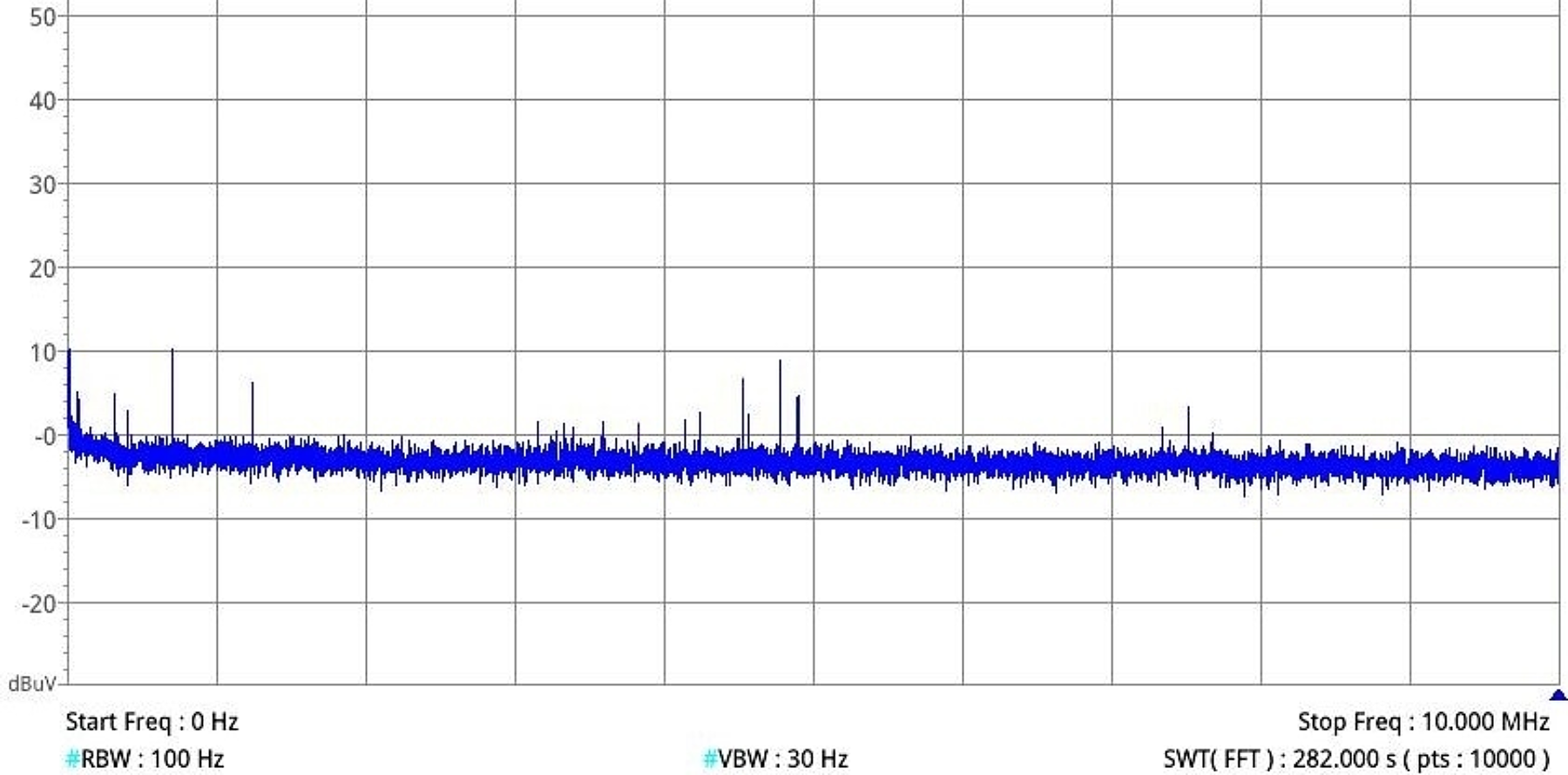
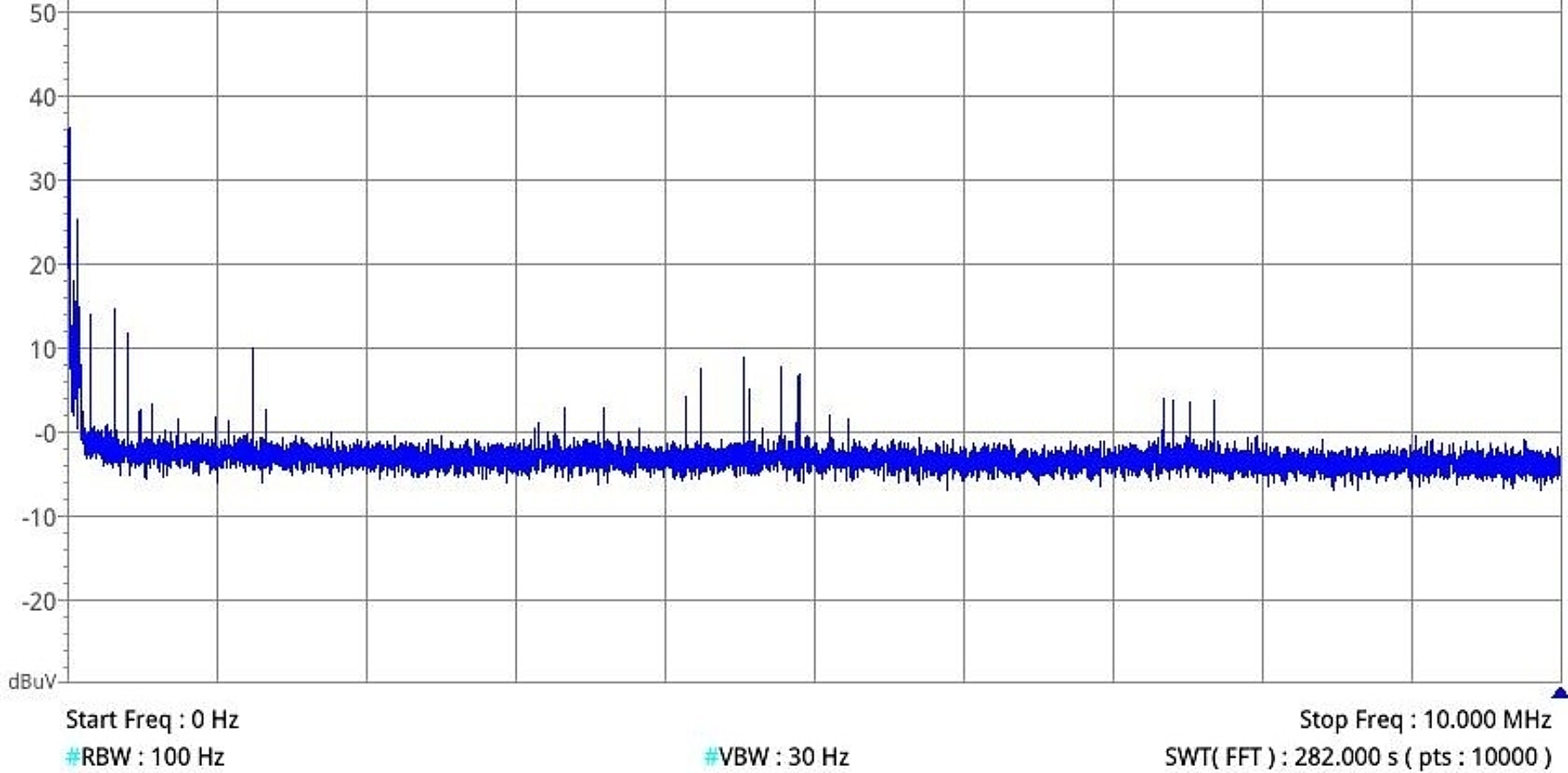
Figure 2a and Figure 2b illustrate typical differential and common mode noise emanating from a 6000 W dc power supply. There are regions in the scans that show EMI being produced, which is typical for products in this power range. While not usually part of EMI studies, there is a high level of signals close to dc. This is a measurement of ac output ripple voltage.
Figure 3a and Figure 3b illustrate the same test setup, but with a DBx Module connected. Comparing the two sets of scans, there are a band of harmonics below 1 MHz with the DBx Module installed. These spectral components result from a switching power supply being used in the DBx Module for powering the control circuitry. More significant is the magnitude of lower frequency harmonics found in the non-DBx Module installed setup. This reduction is a result of the output voltage ripple voltage which will be discussed in the next section.
Table 1 presents the DBx Module’s EMI filter in terms of insertion loss—a common method for evaluating input EMI filters.
| Frequency | 0.05 | 0.15 | 0.5 | 1 | 10 | 30 |
| Differential Mode (dB) | 41 | 58.7 | 46.3 | 62.7 | 55.1 | 50.5 |
| Common Mode (dB) | 30 | 47 | 57.4 | 67.6 | 56.4 | 25.4 |
Linear Regulator
The primary challenge of the output filter design is to suppress lower frequency harmonics. Output ripple voltage can extend down to the mains power frequency. For these lower frequencies, passive LC filters are not practical because of the magnetic component size required at high power. A linear frequency ripple if care is taken to keep a low dc voltage drop across the series-pass power semiconductor.
Figure 4 show the block diagram and associated circuitry for a 1.25 V linear regulator. As illustrated, the regulator requires two feedback loops: one to maintain a 1.25 V dc drop across the linear regulator and the second to produce a ac ripple canceling voltage across the series-pass power semiconductor equal and opposite of the ac ripple voltage at the input. Adding a few series connected diodes across the regulator provides protection for current surging and overvoltage transients -- a weak point in conventional linear regulators.
Figure 5a and Figure 5b show typical attenuation of ripple voltage without and with the DBx Module linear regulator. Observe that the lower frequency disappears with deployment of the linear regulator. The DBx Module reduces the ripple voltage from 55 mV to 3.2 mV or 24.7 db attenuation.
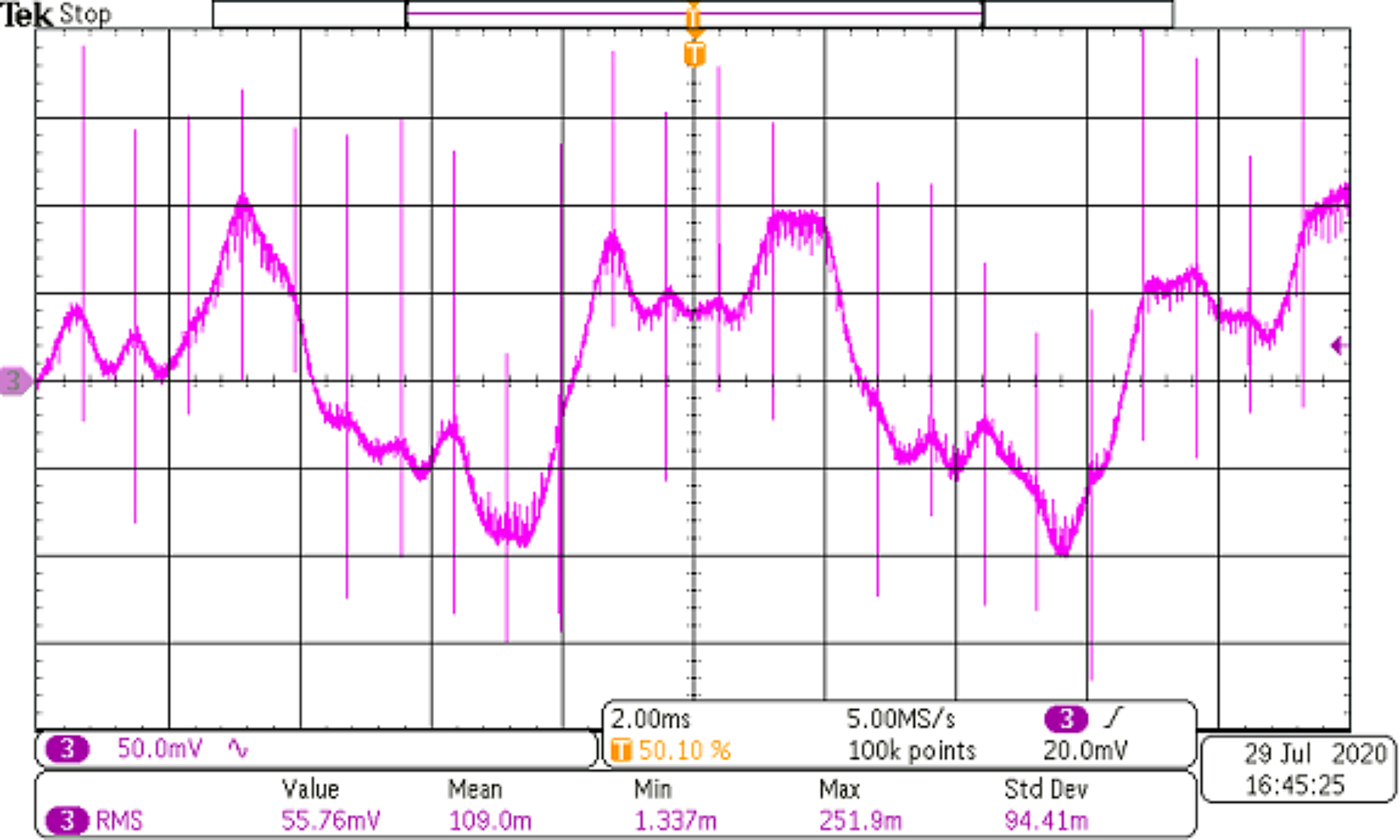
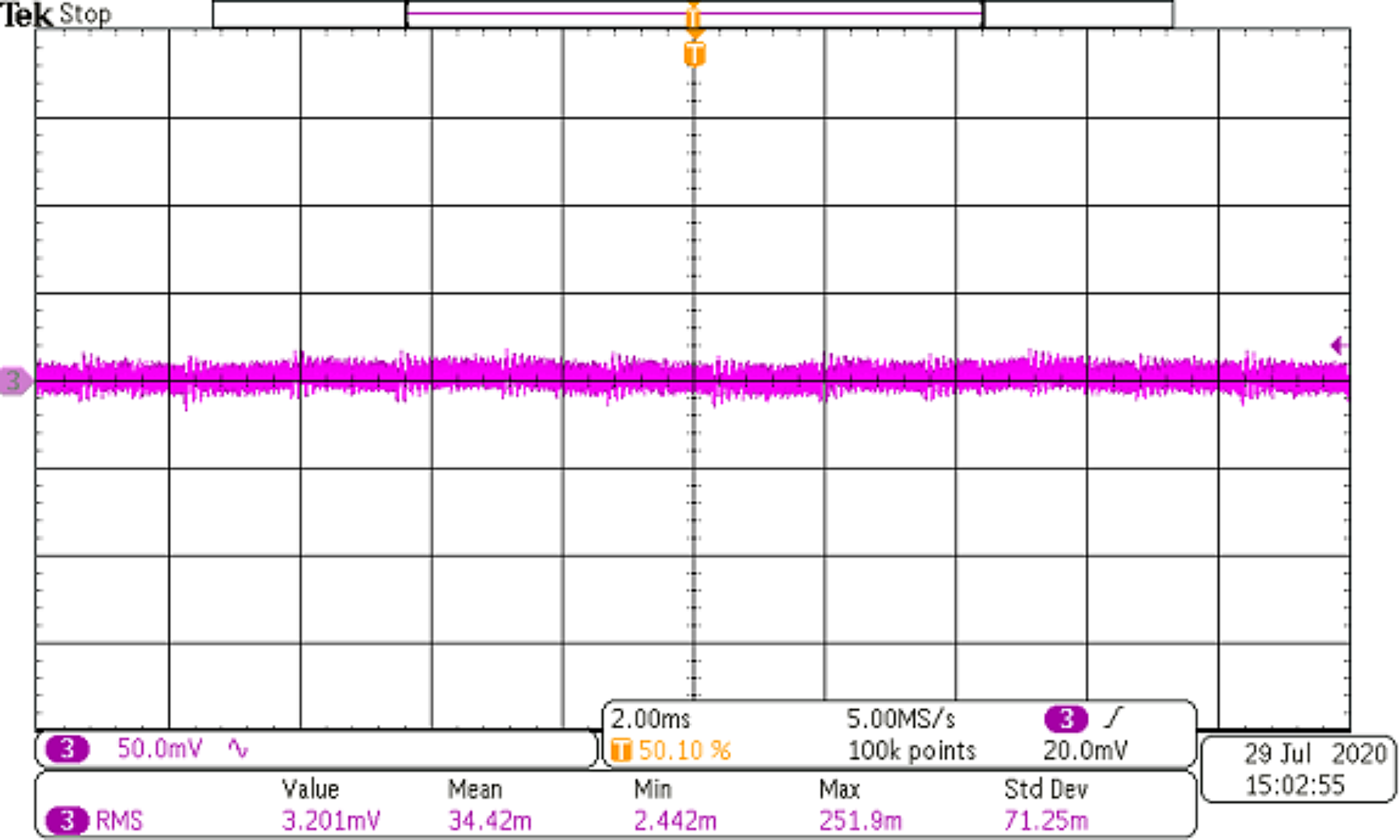
The Controller
Obtaining accurate and precision performance require temperature stabilized, premium components within the closed loop control circuit, namely: the voltage reference, high resolution analog to digital converters, zero-flux current transducer, and low temperature drift resistors. Even with state-of-the-art components, a slight temperature coefficient of 0.5 ppm/°C will result in a 12.5 ppm deviation over a 25° C span. To reduce such a temperature variation, a temperature-controlled compartment for encapsulating temperate sensitive components is necessary. Keeping critical parts tightly packaged and thermally close accelerates time required to stabilize the compartment’s temperature; its variation should not exceed 1° C.
Figure 6 shows the interface connections of a MagnaDC power supply with a DBx Module. The control output of the DBx Module feeds the analog input to the power supply. The power output of the power supply feeds the dc input of the DBx Module. The load connects to the output dc bus of the DBx Module.
For full system performance specifications, see the DBx Module product page.
Conclusion
This article describes a new hybrid technology that integrates the best features of a switching power supply with those of a linear power supply. The switching power supply regulates approximately 1 V higher than the desired output setpoint to maintain a low voltage across the series-pass semiconductor used in a linear regulator. The series-pass semiconductor is controlled to cancel the output voltage ripple generated by the switching power supply. Filters on the output of the power supply reduces the EMI generated by the switching power supply. High performance, temperature stabilized components are used to keep the output constant over a wide temperature range. The new rack-mount module is arranged to mate with standard switching power supplies.
Stay connected and informed.
Subscribe to receive emails—no more than once per month—with new technical articles, product releases and factory updates from Magna-Power.


